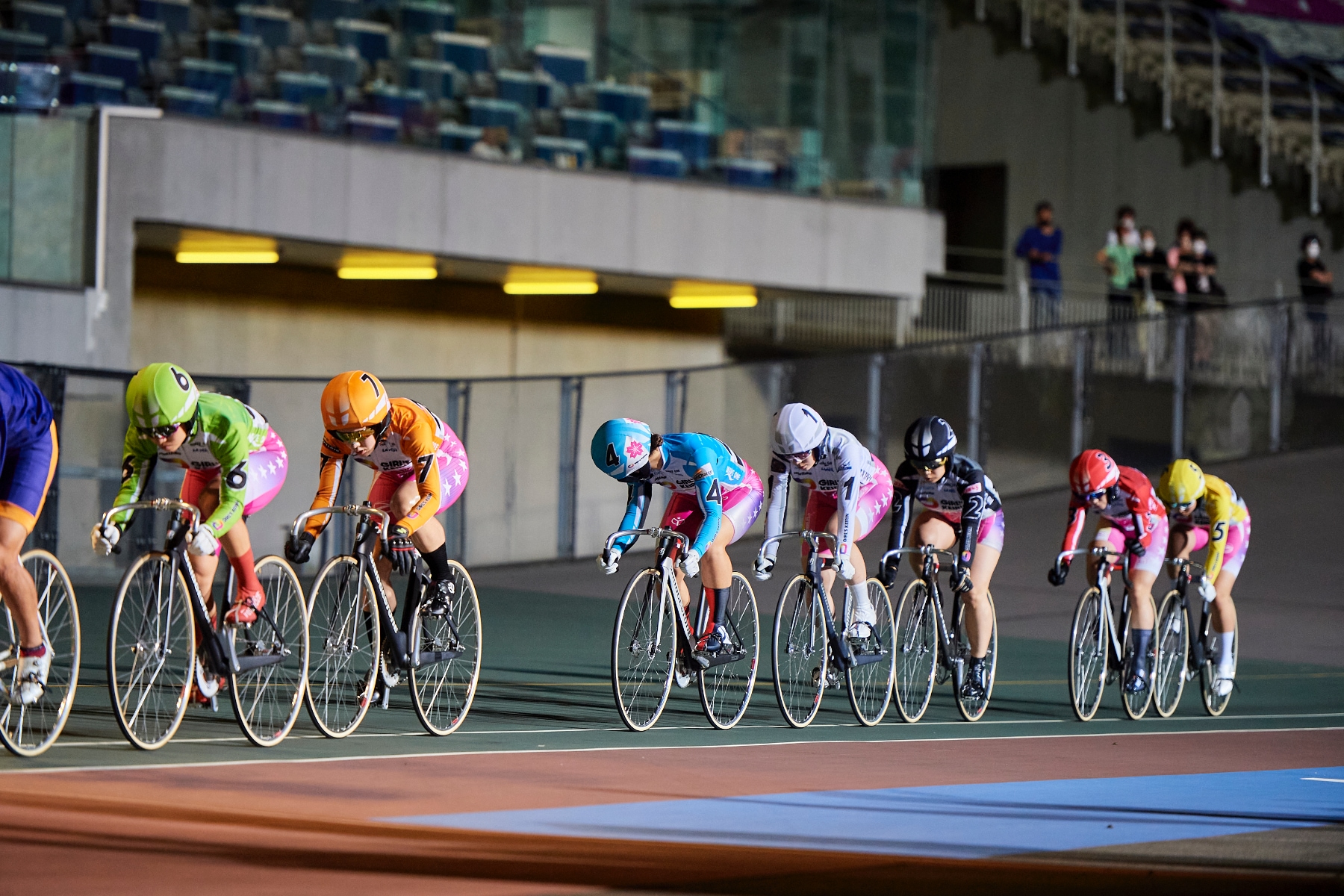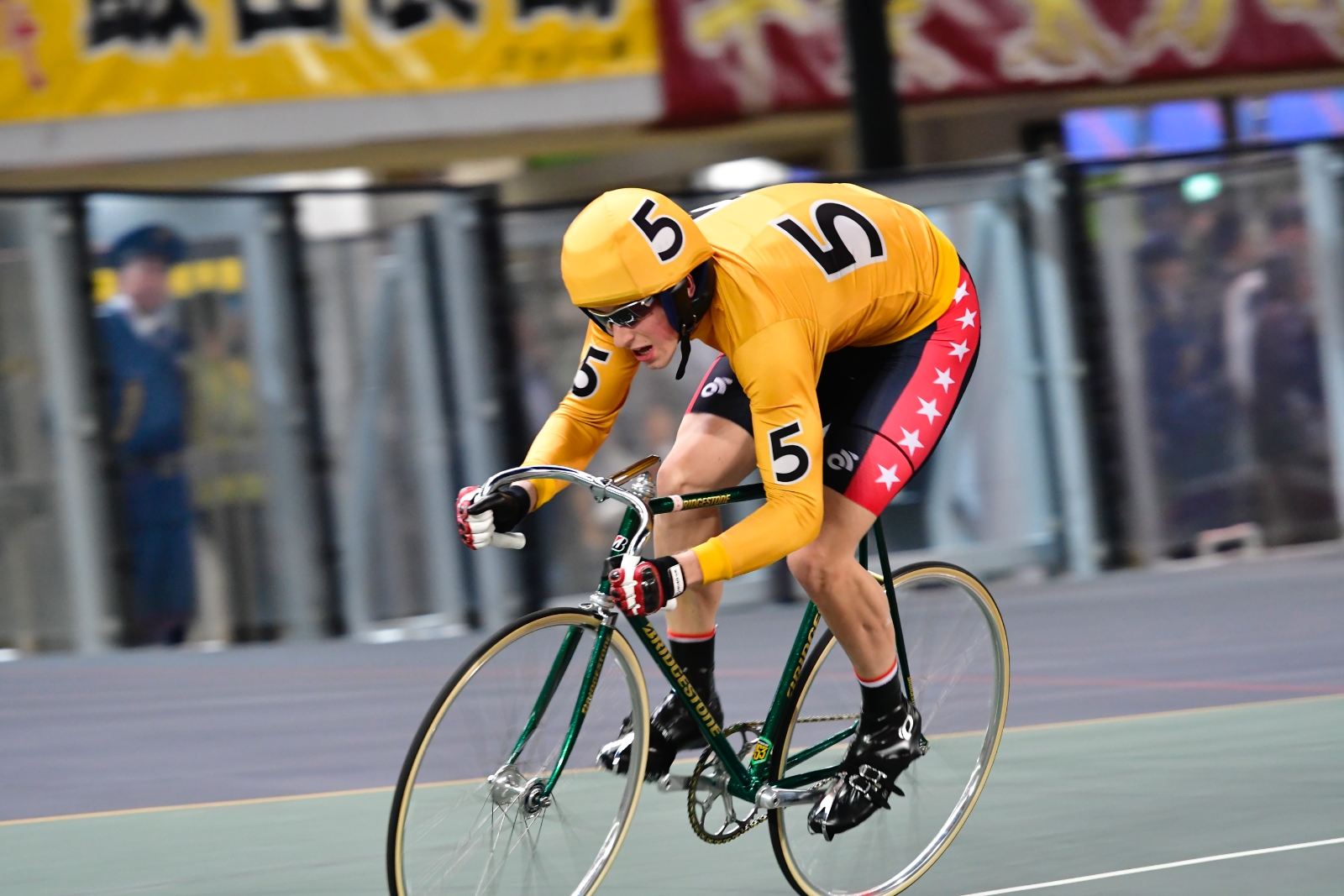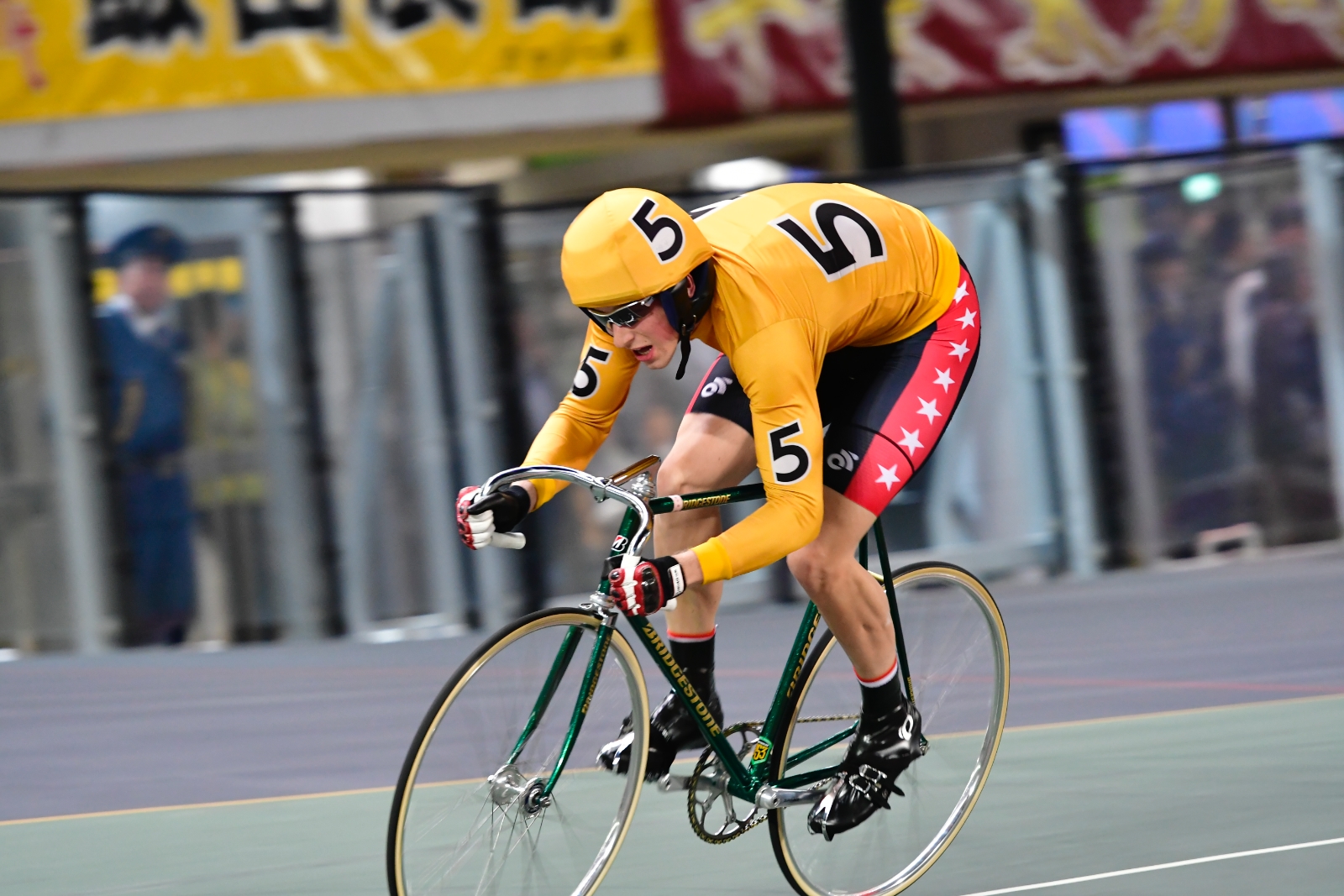Haruka Kawaji is unfazed by the rain filling the Kishiwada Keirin Velodrome in Osaka. Warm despite the cold and with eyes only for the racing line, she clicks her bike into the starting blocks and waits for the bell. As a woman in keirin (Japanese cycle racing event), she’s had to wait longer than most.
Japanese keirin racing pits seven women or nine men against each other on a viciously banked track. Races are between one and two kilometers with most of that distance behind a pacemaker, or derny, that brings riders up to speed.
With a lap and a half to go, the derny peels off leaving the racers to dash for the line at speeds of up to 70 kph.
As one of Japan’s only gambling sports (alongside horse, motorcycle and boat racing), keirin is highly regulated but the racing can be ferocious. Local loyalties and age hierarchies are crucial in determining the best track positions and who gets to ride shielded from the headwind.
The International Cycling Union (UCI) introduced a version of the keirin in 1980 where the tracks are tighter and the races shorter. International keirin first appeared at the 2000 Athens Olympics for men only with a women’s edition following at the 2012 London Games.
As money and technology increased within international keirin so did the distance to its spiritual cousin. Die-hards point to the UCI event’s motorized derny and carbon fiber bikes as reasons why Japanese keirin remains the purest form of the sport.
In 1948, in the southwestern city of Kokura, now Kitakyushu, a ramshackle velodrome hosted the world’s first keirin race.
Just three years after World War II, Japan’s government — desperate to raise cash and morale — introduced the new Bicycle Racing Law.
Hoping that the newly legalized form of betting would boost the city, Kokura’s mayor scraped together the money for a dirt-tracked velodrome. Over 55,000 punters watched those first races, waging nearly ¥19.73 million in the process.
‘Girls Keirin’ races to keep up

Women joined the roster a year later and by 1952 they composed 600 of the 6,000 registered cyclists. But it was short lived; within a decade so-called “Girls Keirin” was dropped, deemed not competitive enough to earn the popularity or funding that gambling sports demand.
It was only in 2012, in part to support a faltering Olympic bid, that girls keirin was revived. It bolstered its popularity with ‘‘sweet pop idol’’ marketing, expecting riders to behave like J-pop stars. The focus was on looks rather than athleticism.
However, incidents in the lead up to the 2020 Tokyo Games (including scandals surrounding Olympic organizing committee president Yoshiro Mori and the Games’ creative head Hiroshi Sasaki) forced many to rethink gender equity, including the Japan Keirin Autorace Foundation (JKA).
“Japan has become increasingly self-aware of its global image,” said Professor Robin Kietlinski, author of Japanese Women and Sport: Beyond Baseball and Sumo. “It has responded to global pressure to ‘right the ship.’ The Mori gaffe was pretty significant in terms of shining a spotlight on issues of sexism and gender equity.”
The JKA ditched its florid pink uniforms in December 2022 to reflect “international perspectives” (Japanese) and after intervention from the Industrial Structure Council retired the slogan “thighs matter more than the look.”
Critics still point to uncomfortable elements that remain however, not least the description of riders as “gorgeous and versatile females” (Japanese) and continued use of “Girls Keirin” in the rebrand.
Out of her seat and sprinting under the lights in Kishiwada, Kawaji is defying such labels. There are four riders between her front wheel and the finish line when, with a lap to go, the race breaks apart. Five riders helplessly watch Kawaji hunt down the front runner. This will go to the line.
On the track, keirin has barely changed. The tactics, equipment and training fuelling Kawaji’s chase are all outlined in the 70-year-old rulebook.
A bucket list item you can bet on

In theory, keirin — whose two kanji mean “contest” and “wheel” — is simple. Factor in the elbows and headbutts the rules tolerate, however, and things become chaotic.
It’s what made Japanese keirin a “bucket list” item for England and Great Britain track cyclist, Joe Truman.
“The race is down to the rider. If you lose, there’s no excuses,” said Truman. “I like the old-school vibe of it.”
Following an impressive 2017 track world cup, Truman received an invitation to the keirin school in Izu following in the tracks of stars including Sir Chris Hoy and Australia’s Shane Perkins.
It’s a 10-month ordeal of 5 a.m. starts, 15-hour days and endless hill sprints before a rider graduates with a keirin license and is allowed to ride competitively.
Truman joined in 2018, leaving the coaches and physios of the Team GB setup behind and swapping his carbon fiber bike for a Nihon Jitensha Shinkokai (NJS) authorized steel bike.
“I went for British racing green and gold, a bit of British influence without it being red, white and blue,” said Truman. “I left my bike in Japan, then COVID hit. So yeah, there is a tall rider currently at the keirin school riding my bike.”
Every regulation is enforced to keep the gambling — if not the racing — clean. With ¥1.3 trillion on the line in betting receipts annually, riders are isolated before a meet, No phones, no internet, no temptation to “fix” a race.
“Knowing people are putting their money on you gives you a boost,” added Truman. “You don’t want to let people down.”
Betting slips show the thigh circumference, blood type, form and astrological sign of each rider — and their tactics.
A day before, the riders declare their strategy: senko (going early and holding a sprint for the whole race), makuri (waiting until halfway to launch) and oikumi (unleashing a sprint in the last few meters).
Truman explained that declaring tactics helps people feel informed on where they are putting sometimes huge sums of money.
With a win riding on a well-timed sprint, atmospheres among bettors range from elated to aggressive. Perhaps the biggest success of the JKA’s campaign against sexism is that male-dominated crowds no longer jeer “girls keirin,” but instead demand results.
Kawaji is on the cusp of claiming a big result here in Kishiwada and makes her move. It’s perfectly timed, springing from the blind spot and winning by centimeters.
There is no celebration, as that could sully the punters’ sense of parity. Besides, as a woman in “girls keirin,” she knows there is a lot further to go.
How to watch your first race
Trying to find a race can be as daunting as trying to understand it. There are guides on tactics and rules in English, but the schedule is all Japanese. You can use your browser’s translation function on the race schedule page (Japanese) — select your region and find your nearest velodrome.
There are different types of events at different times: morning races from 8 a.m., afternoon races from noon and evening races from 4 p.m. There are also midnight races from 9 p.m., but these are only available to watch online at keirin.jp (Japanese).
A ¥100 ticket gets you access for the day and around 10 races. Betting is a big part of the keirin experience but there is no obligation to reach deeper into your pocket than the few thousand yen for trackside yakitori and a beer.
© Japan Today
